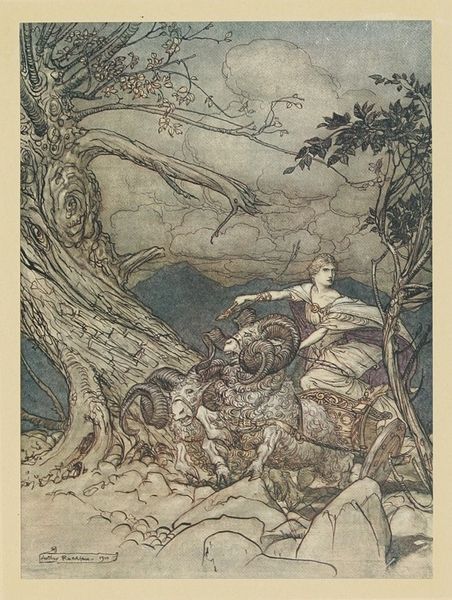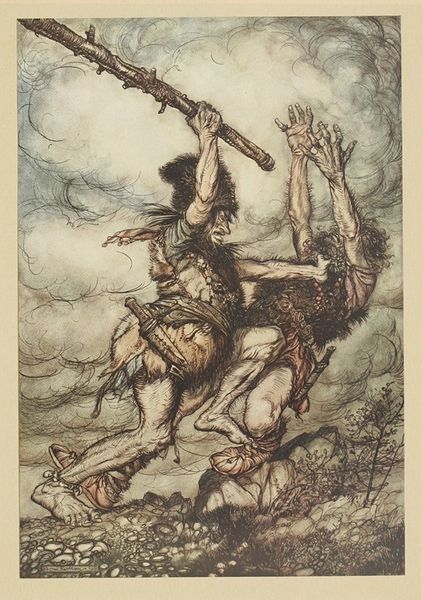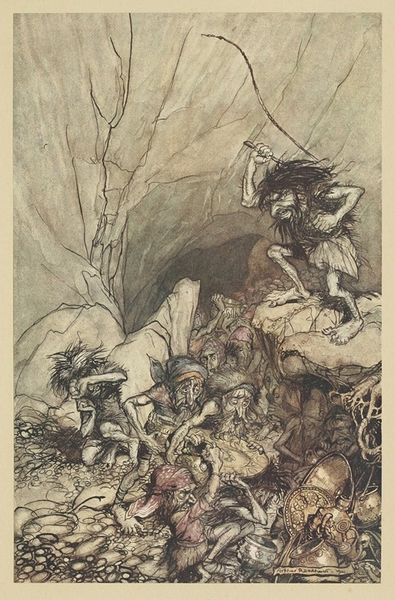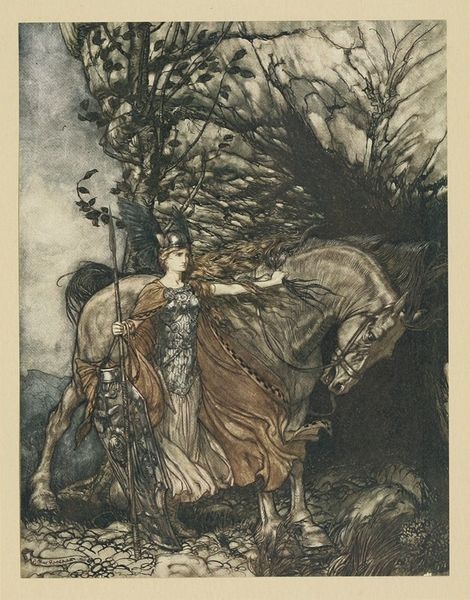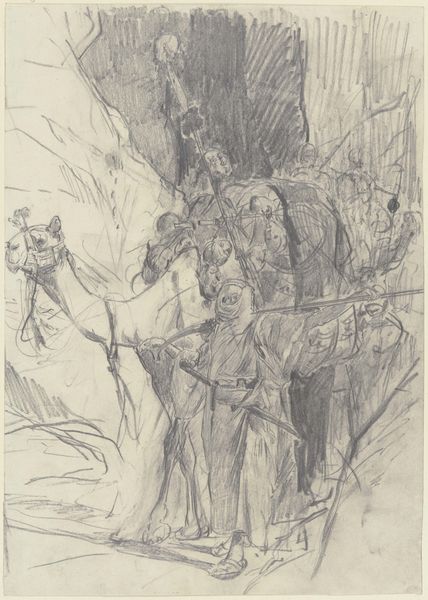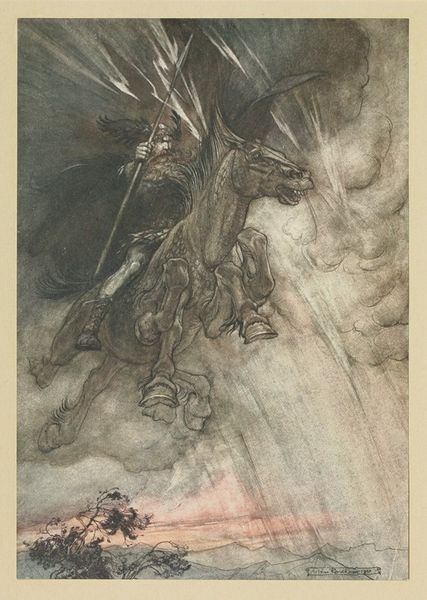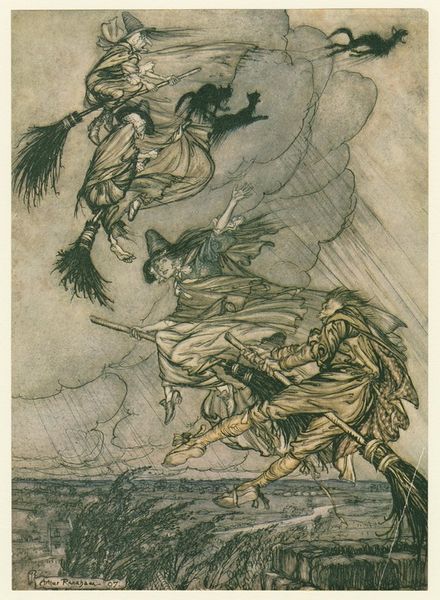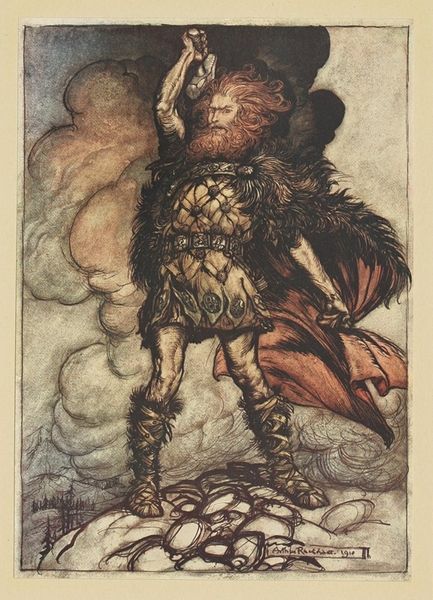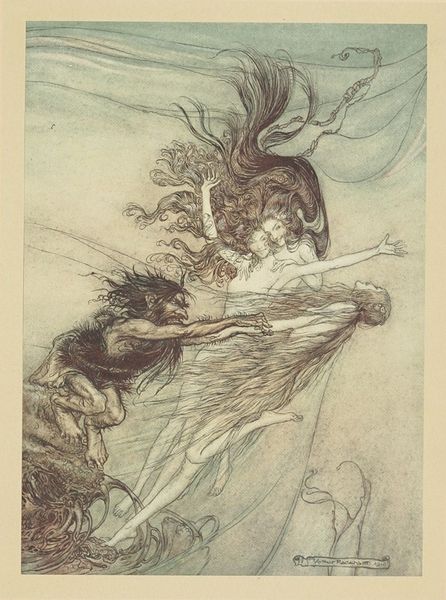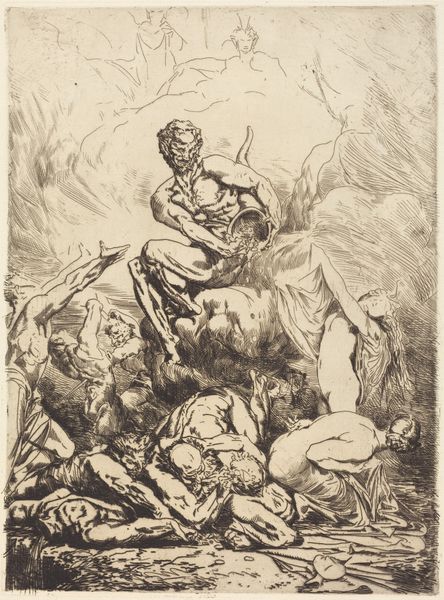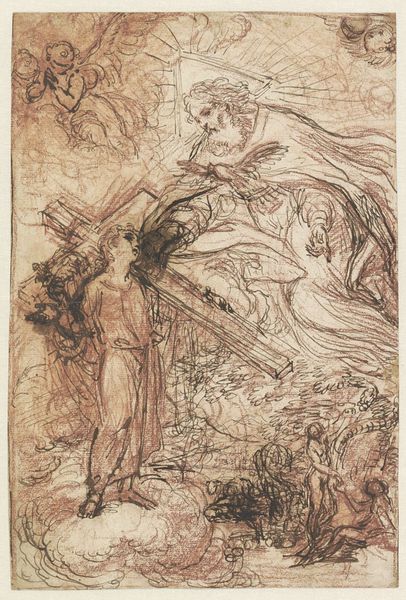
drawing, ink
#
drawing
#
narrative-art
#
pen sketch
#
fantasy-art
#
figuration
#
ink
#
line
#
symbolism
#
watercolour illustration
Copyright: Public Domain: Artvee
Curator: This compelling image, crafted around 1910 by Arthur Rackham, is titled "Fasolt suddenly seizes Freia and drags her to one side with Fafner." It’s an ink and watercolor drawing that plunges us right into a moment of mythic struggle. What's your first take? Editor: Immediate impression: violence. The dark, wiry lines create a scene that's actively hostile towards the feminine, as if she embodies something they feel entitled to take by force. There’s almost no joy here, only power and subjugation rendered through a stark palette. Curator: Absolutely. The composition itself is striking; these two imposing giants seem to erupt from the page, dragging Freia with them. The swirling ink work enhances a sense of turmoil. Look at Fasolt’s fist clenching. Consider what he signifies in the broader symbolic context: raw power and desire. This resonates throughout folklore, linking masculinity with aggression and domination, archetypically so. Editor: Right, but Freia, positioned centrally and being actively violated, evokes historical echoes of systemic violence and dispossession visited upon women. Consider how her idealized, almost classical nudity starkly contrasts against the wild, unkempt forms of her captors. The aesthetic differences subtly underscore themes of "civilization" versus the "barbaric"— a dichotomy often wielded to justify injustice. Is it about the visual storytelling of power dynamics? Curator: Undoubtedly. Rackham uses line and form to suggest the vulnerability of beauty against brutish strength. Her resistance, suggested in the extension of her arm and distraught posture, feels almost futile against these primal figures, yet is emphasized through contrast. We can appreciate this symbolic display of moral strength versus immoral exercise of dominance. Editor: But that tension extends beyond personal virtue to reveal socio-economic injustices—reflecting historical power imbalances too, doesn't it? Even in this mythical narrative, it is rooted in the very real history of men appropriating feminine energy and its power, with Freia a symbol for it. Curator: You bring a sharp, important awareness of the deeper narratives this image evokes. By using these well known visual and historic languages, Rackham offers up this visual representation to trigger awareness about their ongoing influences in our shared story. Editor: And maybe that's why it continues to unsettle even today— the pattern persists, reminding us just how much the old mythologies still live within our present realities.
Comments
No comments
Be the first to comment and join the conversation on the ultimate creative platform.
